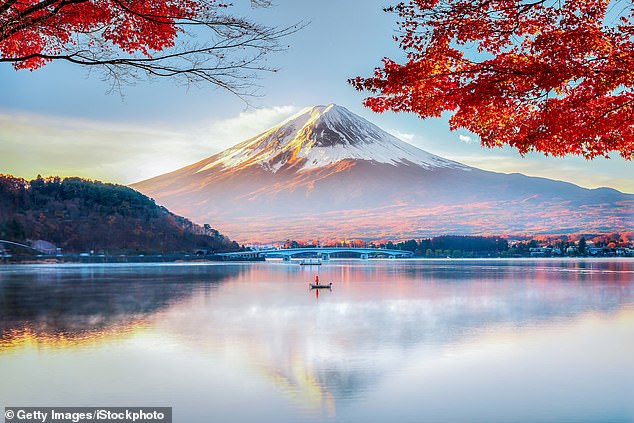Everything is going very well on this walk through Aokigahara Forest, in the foothills of Mount Fuji, when our guide, Makoto, stops next to an old tree and points out some scratches in the bark.
“This shows that a black bear has been here recently,” he says. No one else seems concerned, so we continue. Later, when I’m safely in my tent, I realize I’m learning about a lot more than bears on this glamping vacation in Japan.
Glamping? A word created from combining the ideas of camping and glamor to make camping holidays more luxurious, it has become a trend here. Forget capsule hotels and skyscrapers; Instead, visitors can explore Japan’s 34 national parks.
With the value of the yen against sterling in our favour, Japan has become a relatively cheaper option for Brits, and this type of tented holiday reduces that cost even further.
I’ll be staying at Villa Hanz, one of the first of these new glamping ventures, a two-hour drive from Tokyo and accessible by train. It is in the Fuji Five Lakes region, which has been named a UNESCO World Heritage Site. The nearest lake is Kawaguchiko, where many water sports, such as canoeing, kayaking and paddleboarding, are offered to sporty visitors.
POV: Lucy Daltroff checks in at Villa Hanz, a campsite located near Lake Kawaguchiko (pictured)
Villa Hanz aims to promote not only skills in nature, but also a love of nature. It can accommodate up to 144 guests served by 50 staff members. Through them, and their infinite patience, we learn to light fires, chop firewood, and handle knives safely.
These basic skills, according to our guide, are increasingly scarce in the modern world. Most Japanese homes do not have gardens and many children often do not have the opportunity to climb trees or explore nature. I see a young Japanese man collecting firewood in such fierce competition with his older brother that his mother has to calm him down.
This is soft glamping, with three grades of accommodation. I’m in the most basic, the ‘pao’, an igloo-type tent in the forest. Simple on the outside, it’s deceptively luxurious on the inside. Equipped with modern and antique furniture, it has an adjoining bathroom with the ubiquitous Japanese toilet that washes and heats. And the futons are comfortable.
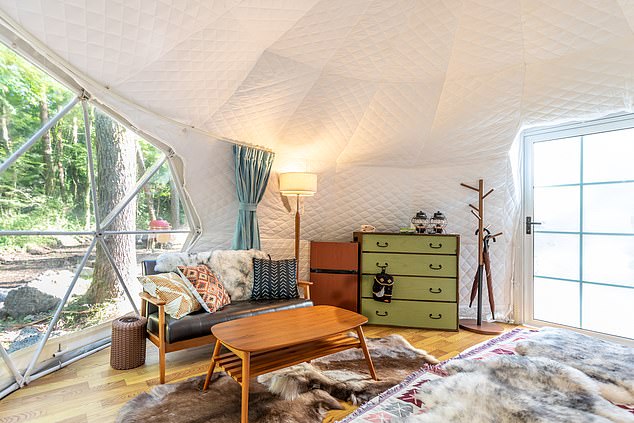
Above, one of the igloo tents, which Lucy says are “deceptively luxurious inside.”
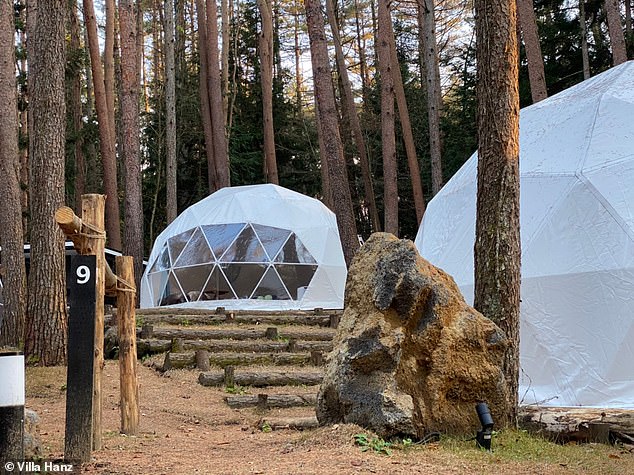
The tents are equipped with modern and antique furniture and have an adjoining bathroom with a Japanese toilet.
Another option is a villa, a spacious and bright wooden house with a barbecue in the back. At the top of the scale is the main guesthouse, a restored traditional Japanese house that sleeps ten people.
Wherever you stay on site, breakfast is served in the main building. One morning, I meet a woman toasting her bread while I admire the snow-covered Mount Fuji. “It is a great privilege to be able to see up close what has been represented so many times in art,” she says.
It’s a shame we missed the stargazing tour, but it took too long to prepare our barbecue dinner. Baskets of fresh products can be purchased on site; Unfortunately, we can’t buy culinary experience, but we do become more skilled (and faster) during our stay.
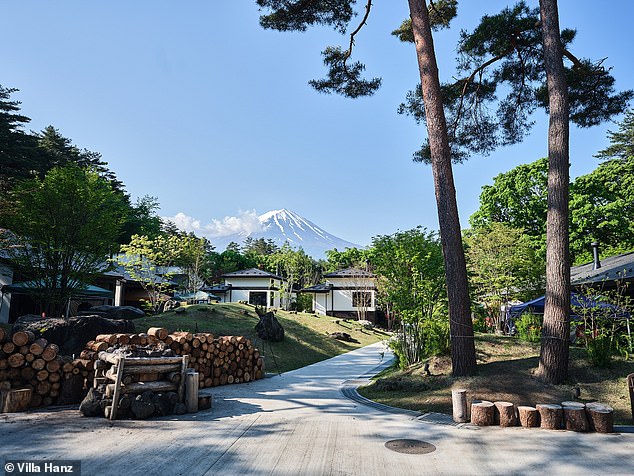
At Villa Hanz guests can fill their bottles from a fountain fed by Mount Fuji, explains Lucy.
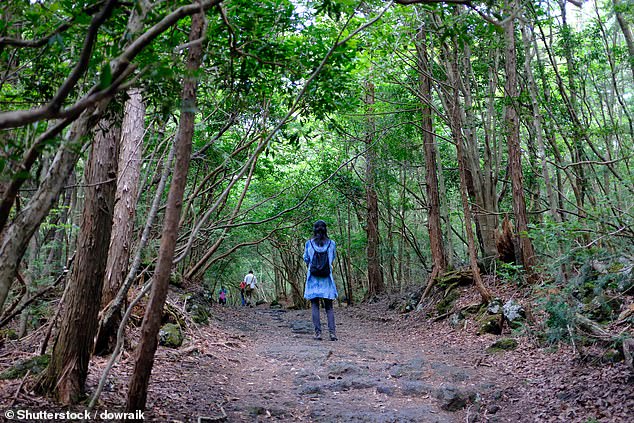
Lucy (not pictured) enjoys a guided tour of Aokigahara Forest
As for drinks, everything is available: it is one of the few glamping places that has its own wine cellar. And the water also tastes divine. We filled our bottles at a fountain fed by Mount Fuji. This spring it is popular and is the only queue we have here.
This being Japan, there is an onsen, a natural hot spring, where I enjoy the warm water and I wonder why I am such a fan of this country. Is it the cleanliness, the tasty food, or the friendly people? One day, while climbing a steep hill, the guide offered to carry my heavy backpack.
Although I prefer to sleep under a tarp, I am most happy to walk through the forest. All of its vegetation has grown on lava, thrown up when Fuji erupted in AD 864. But that layer of sediment has created a disturbing problem. It masks the Earth’s magnetic field and no compass will work inside these forests. It’s a completely different world.


